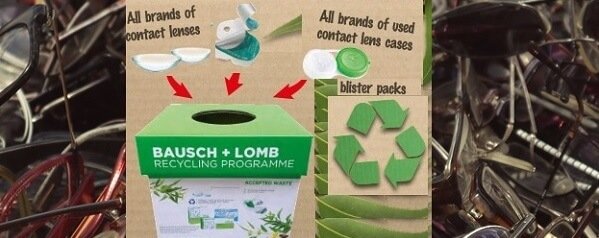Contact Lenses Bega,Tathra, Tura, Bombala, Narooma, Merimbula, Eden
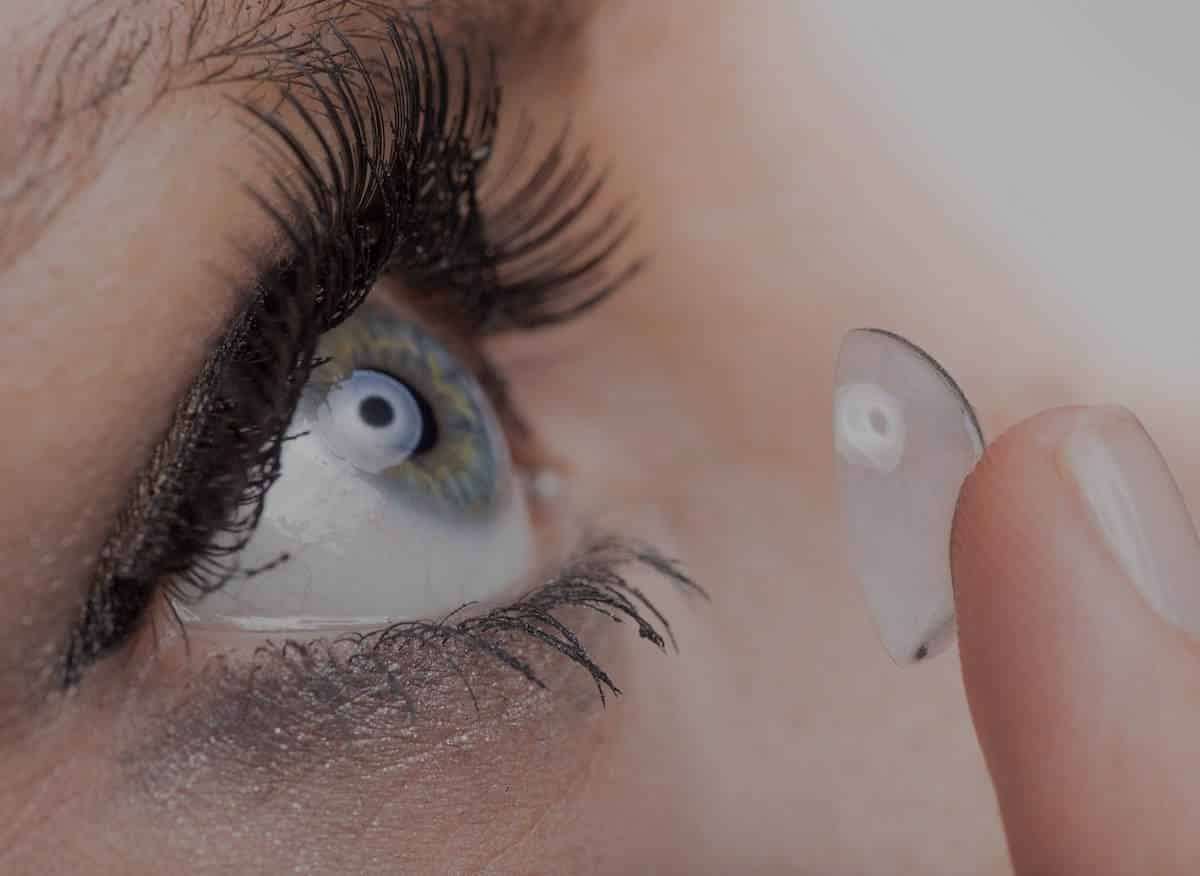
Contact lenses of all types, including advanced keratoconus designs, are fitted by Peter D’Arcy Optometrist Bega ( member of the Contact lens Society of Australia.) Including soft contact, disposable contact, monthly disposable, and extended wear lenses. Contact lenses are often trialled before and after refractive surgery. Keratoconus patients may need specially fitted custom, soft, RGP (rigid gas permeable), scleral or piggy-back forms. This is to correct the distortion of the cornea and provide better vision rather than glasses. Keratoconus patients also enjoy the better field of view afforded by the fresh optical surface at the cornea’s front.
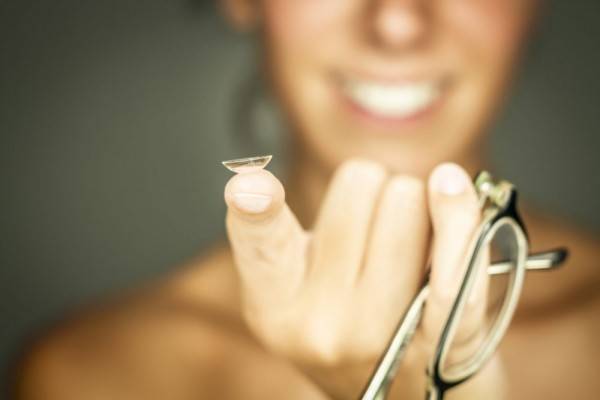
Any complications are graded by type, severity and location. Even multifocal contact lenses are available. RGP (rigid gas permeable) lenses for keratoconus and ortho K myopia control. Post graft CL fitting and advice on laser surgery/refractive surgery options. Keratoconus may require contact lenses or glasses. Special custom, soft, RGP (rigid gas permeable), scleral or piggy-back form contact lenses are available. This can better correct the distortion of the cornea and provide better vision rather than glasses. Keratoconus patients also enjoy the better field of view afforded by the fresh optical surface at the cornea’s front.

All contact lenses have different purposes. The keratoconus mires seen in an instrument called a topographer help to determine the design required. For regular corneas, daily contact lenses are supplied more than monthly types as a fresh lens is best. New materials and designs, including silicone hydrogel lenses, provide more oxygen-permeable and wettable performance.
A fresh pair of daily contacts for daily wear is known as daily disposable contacts. Monthly disposable contacts are discarded after 30 days of wear and require more contact lens care, e.g. surfactant cleaning with your index finger. Recent studies demonstrated that daily disposable lenses decrease the risk of CIEs (corneal infiltrative events ) more than 12‐fold compared to reusable lenses or extended wear (EW) types.
Thousands of brands exist, e.g. Daily, Bi-Weekly and Monthly products
Suitable lenses that are approved by the U.S. Food and Drug Administration to wear during the day and to sleep in are often called “extended wear,” “continuous wear,” or “overnight wear.”
However, this non-removal before sleeping increases the risk of getting a serious type of corneal infection called microbial keratitis, especially if the wrong gas permeable material is used on a susceptible eye. The eyes are examined whilst wearing contacts,where the fit can be checked against the shape of the cornea. The surfaces of the eye and the contact lens are examined under magnification.

CLARE (contact lens-induced acute red eye) has been reported with EW RGP lenses, silicone elastomer lenses, and the overwear of daily soft lenses; a history of extended wear with hydrogel lenses is most typical, as is a uniocular presentation. EW research studies report a yearly incidence rate between 4% to 30 % depending on lens type, lens care regimen, and lens replacement frequency. An eye care professional often encounters eye health issues from unsuitable contact lens solutions or regimes being employed. Lens specifications can vary widely, including water content, and contact lens intolerance can include giant papillary conjunctivitis (GPC). Irregularly shaped corneas such as in the keratoconus shape mean the correct fit, design and material is even more critical. The latest materials consist of a silicone layer between thin layers of soft, hydrated polymers allowing for greater oxygen transmission and greater wearing time, essential for extended wear contacts and keratoconus patients. Daily disposable lenses reduced the risk of infection by 12^ times compared to reusable soft lenses: Saline is incapable of disinfecting lenses because it contains no disinfection agent. Some people report they have been doing this without problems, but in the same way, some people have smoked 20 cigarettes a day and live to be 100, but that doesn’t mean smoking is safe.
^R.L. Chalmers, L. Keay, J. McNally, J. Kern, Multicenter case-control study of the role of lens materials and care products on the development of corneal infiltrates, Optom Vis Sci (89) (2012) 316-25.

- Contact lenses offer a fuller field of view, e.g. freedom from glasses; sports use without fogging.
- There is a contact lens to suit almost everybody, young and old, even multifocal contact lenses. They can be ideal for sports due to the wider peripheral vision and freedom from glasses.
- Fitting, assessing and monitoring of all prescription contact lenses for suitable patients can be undertaken. Both the wearing of contact lenses and spectacles can supplement or replace the sole spectacle-wearing option.
- Certain brands and designs can be worn for up to 29 consecutive nights, depending upon your suitability. There are also many customised lenses available if you have particular needs or an unusual prescription. Irregular cornea reshaping is possible
Keratoconus - Cone shaped cornea- contact lens fitting.
Keratoconus from the Greek keras (horn) and konos (cone), which means conical cornea. Keratoconus is actually strongly associated with eye rubbing, which causes a thinning of keratocyte corneal cells. It is best to avoid eye rubbing to reduce the tendency for keratoconus. Rubbing and itching of the eyes are best avoided. Treating any dryness of the eye is advised. The prevalence of keratoconus varies between different studies due to the differences in diagnostic tests and the definition of keratoconus; the prevalence was reported to be 1 case in every 2000 individuals globally. Keratoconus gradually transforms the cornea’s curvature, transforming it from a more regular spherical shape to a more irregular cone. This causes a loss of visual acuity and requires careful optical correction and monitoring. Keratoconus is a non-inflammatory disorder but can also result in corneal thinning, which usually occurs bilaterally with varying development. Keratoconus usually appears between 10 and 20 years of age and tends to stabilise by the age of 40. One study suggests Keratoconus affects one in every 84 Australians aged in their 20s.

A design such as the KBA ( 10.2mm, Epicon 13.5mm, or Katt 16.5mm can vault much of this irregularity. Keratoconus (usually bilateral) is a progressive thinning of the cornea and is the most common corneal dystrophy

Keratoconus lens wearers, be they be in Bega, Tathra, Tura, Bombala, Narooma, Merimbula, or Eden, need to ensure their lens fitting and tolerance are safe. It can cause double or blurred vision, nearsightedness, astigmatism, and increased sensitivity to light. We can advise on the material and design based on the optics, health and shape of your eyes and frequency of replacement.
In advanced cases of the keratoconus conical cornea, corneal grafts can often be done between 20 – 45 years of age, ideally, sometimes fitted with contact lenses.
Different materials vary in how much oxygen can pass through to the eye and how moist your lenses stay throughout the day.
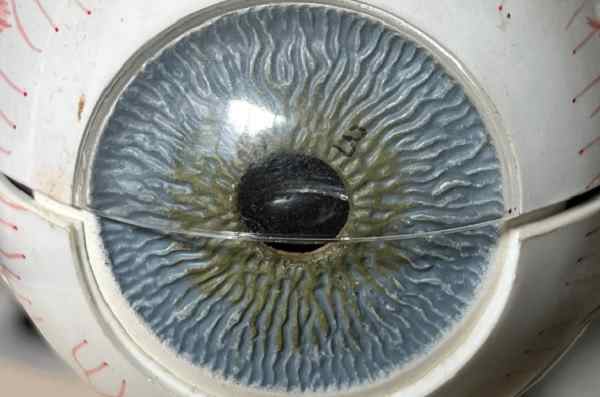
The Australian Donation and Transplantation Activity Report shows in 2021 there were 1,472 deceased eye donors.
Since 2009 – when there were only 922 eye donors – more than 26,000 Australians have received a corneal transplant.
The donation rates are intimately associated with the degree of stress in the hospitaland health systems

Corneal topography images and maps the surface curvature regularity, as does anterior OCT scanning for various eye conditions. In most cases, the cornea stabilizes after a few years without causing severe vision problems. A small number of people with keratoconus may develop severe corneal scarring or become unable to tolerate a contact lens. For these people, a corneal transplant may become necessary. Corneal Inlays can be used as a possible treatment option for patients with keratoconus.
Keratoconus collagen cross-linking ideally in the mid-teens can be considered to strengthen the cornea.
Using an application of riboflavin (Vitamin B2) eye drops during exposure to ultraviolet (UVA) light, the exposed deeper layers of the cornea develop bonds between its fibres, followed by a bandage contact lens aid repair. The cause of keratoconus is unknown, likely to be an inherited condition. Some studies have connected keratoconus with allergies such as asthma, eczema and excessive rubbing. The corneal health and regularity need to be determined in assessing the optical correction possible.
Corneal allogenic intrastromal ring segment (CAIRS) overcomes higher complications rates associated with current synthetic (may last only 10 years and more complications) corneal implants by using donor tissue instead. Corneal cross-linking treatment can stabilise keratoconus.Glasses and contact lenses can improve vision but up to 20% of patients may need a full corneal graft to retain useful sight.
COLOURED CONTACT LENSES
Freshlook Dailies in a box of 10 different colours are a daily only option.
- Two-week option of daily wear overnight disinfecting
- Freshlook Colour blends can provide a noticeable change on lighter coloured eyes.
- Freshlook colours can be used for darker eyes.
- Freshlook Dimensions have blended colours.

Standardised grading scales are used for recording and monitoring clinical changes to ocular tissues.
The conditions under which lenses are purchased, stored and transported should be better regulated as should control over online sellers with risks of counterfeit lenses or repackaged.
Never change your lens-care system without oversight as preservative reactions are common and require examination.

Sometimes coloured contact lenses are purchased online without a prescription and such is only asking for trouble. No wonder they are sometimes called crazy contact lenses. Wearing contact lenses, even daily disposable wear lenses means eye care becomes more important.

Studies have shown that wearers who do not follow recommended replacement schedules have more complications and self-reported discomfort than contact lens wearers who follow the replacement recommendations and aftercare visits. The risk of inflammation and infection increases with the frequency of overnight wear, especially in non-peroxide disinfecting regimes. Contact lens material factors have to be considered. Reading glasses for some wearers may be required also depending upon their own prescription and contact lens design used.
DAILY CONTACT LENSES





BIOFINITY lenses may be prescribed for daily wear and extended wear for up to 6 nights/ 7 days of continuous day and nightwear USFDA, but it is subject to patient suitability.
Not all patients can achieve the maximum wear time. It is recommended that the contact lens wearer be evaluated on a daily wear schedule. If successful, then a gradual introduction of extended wear can be followed as determined by your personal responses and your eye doctor.Once removed, it is recommended that the lens remain out of the eye for a period of rest overnight or longer and discarded by the prescribed wearing schedule. We can advise the appropriate wearing time for your specific circumstances.
Proclear has the FDA approval for dry eye. Proview Elite and the Proview Perform are considered the best for handling. The Proview Elite has a blue tint, and the Proview Perform has not.
Provison contact lens types are all equally popular but differ in water content
- Proclear 1day is 60%
- Proclear monthly is 62%
- ProView Elite has 54% water content
- ProView Daily has 60% water content
- ProView Perform has 56% water content.
Johnson & Johnson Vision Acuvue Popularity
- 2 weekly Acuvue Oasys (also now available with Transitions Light Intelligent adaptive technology.)
- 1 Day Moist
- Oasys 1 day best lens for dry eye and handling and the first choice often if compatible with the material
Purevision contact lenses and Biotrue oneday contact lenses are popular from the Bausch and Lomb range
- Pure vision 2
- Ultra monthly
- Pure vision
- Soft lens



Alcon
|

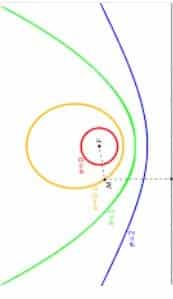
Depending on a range of factors eg keratoconus eccentricity RGP material choices include:
- Boston XO
- Harmony Plus
- Boston EO
- Boston ES
- Fluoroperm 30
- Fluorperm 60
CARE OF PRESCRIPTION CONTACT LENSES.
Infrequent replacement of lens cases and poor cleaning of cases have been linked to serious eye infections in contact lens wearers, such as ulcers.
An invisible layer called a biofilm can grow in the case, and its presence can make contact lens disinfecting solution less effective at killing germs.



How to use Hydrogen Peroxide correctly
Hydrogen peroxide placed directly into the eyes or on your contact lenses can cause stinging, burning, and temporary corneal damage. When using hydrogen peroxide, you must follow the disinfecting process with a neutralizer. The neutralizer turns the peroxide into water and oxygen, making it safe to put your lenses back into your eyes.
- Neutralization can be either a one-step or two-step process. The one-step process neutralizes your lenses during the disinfecting stage, while the two-step process neutralizes your lenses after the disinfecting stage.
- Some storage cases have a neutralizer built-in, making it a simple one-step process. In other cases, a neutralizing tablet that comes with the hydrogen peroxide solution must be added. This is a two-step process.
INSERTION AND REMOVAL OF DAILY SOFT PRESCRIPTION CONTACT LENSES
As well as the risk of cosmetic contact lenses being worn unsupervised, some other cosmetic eye procedures have their risks also, eg.
Eyelash extensions: If synthetic material fragments from the fake eyelashes, corneal abrasions can occur as well as requiring removal
Cosmetic laser procedures: If goggles or shields to protect the eyes are faulty, laser light can be detrimental to eye health.
Episcleral tattooing: Dye is injected beneath the conjunctiva to change the white of the eye to a colour of choice. Risks of headaches, light sensitivity, infection, haemorrhages can result.
Most lens wearers give up in the first year (because of lack of compliance with follow up usually), but most problems can be overcome as contact lens wear is a provocative test for an individual patient.
Insertion and removal are preceded by washing, rinsing and drying hands.
One’s ring or middle finger of your dominant hand is used to insert the lens centrally. Removal is by looking up and pulling down your lower eyelid with your middle finger. Using your index finger, slide the lens down to the white of your eye, pinching the lens between your fingers to remove it.
Storage is in fresh disinfecting solution in the freshly cleaned case depending upon wearing modality.
READ MORE CONTACT LENS FITTING AND AFTERCARE
Contact lens fitting requires continued aftercare.
Always wash and dry your hands thoroughly before touching your contact lenses.
Replace your contact lenses at the recommended interval
Clean your contact lens case daily and replace your case every month. The risk of painful infection is minimal. Still, it is generally recommended for wearers to replace them according to an assigned schedule and only rinse and store them in purpose-made contact lens liquid if not the daily modality.
Red and sore eyes can quickly escalate into corneal ulcers. Using clinical grading scales under microscopic evaluation during your eye examination, safe lens wear can be achieved and maintained.
Do not sleep or nap in your contact lenses unless supervised and planned.
Water contains microbes that can cause a serious eye infection. Your lenses should not come into contact with water: avoid swimming
and showering while wearing them. Mixing fresh solution with a used solution in its storing case also risks contact lens-associated infections. A multipurpose solution still requires rubbing action and a clean rinse. Unfortunately, many people do not take proper care or rely on cheap contacts that may not have been stored properly or manufactured accurately. This can cause infections, irritation, and vision loss. It would be best if you never used saliva, the only saline, to moisten lenses. The mouth has lots of bacteria that could quite possibly cause eye infections.
Bacteria are present on surfaces all around us.
• Only two-thirds of people in the general population practice any hand hygiene.
• Up to 50% of contact lens wearers are not compliant with handwashing procedures.
• Poor hand hygiene is a risk factor of developing microbial keratitis and corneal inflammatory events in contact lens wearers.
Specific lubricating eye drops or preservative-free artificial tears can help to wet specific lens materials. We can recommend the ideal wearing replacement schedule to avoid the potential contact lens blindness at worst or suboptimal performance and safety. Saline cannot be used as a disinfecting agent.
The Center for Disease Control & Prevention has some summaries regarding infections and contact lens care.
For reusable contact lenses, disinfecting Solution will reduce the number of germs on the lens after each wear to prevent an infection from occurring. For contact lens disinfecting solutions to be effective, they have been tested and must pass the government FDA/TGA requirements to reduce germs and be safe on the eye. Disinfecting solutions also remove build-up (proteins & lipids) on the contact lens to provide optimal comfort through the wearing schedule of the lens. Saline does not pass this requirement; it does not contain any ingredients that will reduce germs on the contact lens. It also does not contain any ingredients that will remove the proteins and lipids that stick to contact lenses during the day.
RGP regimes
One-Step Cleaner – Boston Simplus – cleans, disinfects, conditions and cushions RGP contact lenses and removes protein daily.
- Two-Step Cleaner
Step one – Boston Advance Cleaner removes debris and deposits from RGP lenses, leaving lenses clean and clear. It is visibly tinted for improved rinsing.
Step two – Boston Advance Conditioner contains a dual disinfecting system that delivers excellent protection against harmful microorganisms.
For Additional Cleaning Boston One Step, Liquid Enzymatic Cleaner removes protein deposits weekly from RGP lenses.
Lubricated contact lenses Boston Rewetting Drops, rewet, recondition and lubricate RGP lenses to relieve minor irritation and discomfort during contact lens wear.
Bausch & Lomb regimes
Soft
The regimen for soft lenses is a one-step process for cleaning, disinfecting, and conditioning.
B+L solutions for soft lenses :
- Renu Fresh
- Biotrue
- Renu Sensitive
- EasySept (hydrogen peroxide)
READ MORE CONTACT LENSES AND COVID 19
There’s currently no evidence to suggest an increased risk of being infected with SARS-CoV-2, the novel coronavirus that causes the disease known as COVID-19, through contact lens (CL) wear. Contact lens wear is safe and can be maintained by healthy individuals.
However, correct handwashing and strict hygiene practices for CL wearers to decrease the risk of eye infections are still essential. Contact Lens Wear is a safe activity with low rates of infections or other serious complications, but poor compliance with safe practices can increase risk.
Contact lenses, solutions and eye drops (where applicable) should be used, worn and replaced as prescribed. Storage case hygiene and care practices should be followed for reusable lenses.
Where possible, Daily Disposable Contact Lenses are advised as they improve compliance and reduce risks of complications in lens wear.
It is advised not to wear contact lenses if a wearer is unwell. This applies in particular to any signs or symptoms of colds and flu, respiratory tract infections, red sore eyes, discharge. Contact lens wear does not appear to increase the risk of developing COVID-19, compared to spectacle lens wearers or those with normal vision who do not need any corrective devices. To date, there is no known research suggesting any such link or risk.
• It should also be noted that contact lenses provided by leading manufacturers are manufactured in sterile conditions, and the lenses are safe to wear. The majority of contact lenses supplied on the market are in a state ready for wear. Customised lenses should be disinfected before use.
• Contact Lenses obtained from dubious sources, including counterfeit lenses and those offered through unlicensed premises and providers, should be avoided as these may not be sterile or safe to wear.
• Always seek professional advice and consult with your eye care provider.
• Avoid touching your eyes, face, nose and lips as far as possible and avoid eye rubbing.
• There are a few essential messages we can apply to contact lenses. Your eyes should ‘Look Good’, ‘See Good’ and ‘Feel Good.
• Proper Handwashing: A Cornerstone of Safe Contact Lens Wear
• Thoroughly WASH HANDS before;
• Handling Contact Lenses and CL cases.
Applying contact lenses, even for brand new lenses direct from the pack. The aim is to prevent spreading any nasty pathogens (bugs, bacteria, fungi, viruses etc.) from hands or fingers to the lens and, therefore, the eye.
• The same applies to removing contact lenses from the eye.
• The US-based Centers for Disease Control and Prevention has issued COVID-19 guidance stating that eyes should not be touched with unwashed hands.
Contact lens wearers as well should wear protective eye wear as appropriate.
A CONTACT LENS COMPLICATIONS GRADING SCALE allows an overview of contact lens complications graded by severity and location. We can compare your status accordingly.
| CONTACT LENS COMPLICATIONS INCLUDING |
|---|
| Conjunctival redness, Limbal redness, Corneal neovascularisation.Epithelial microcysts |
| Corneal oedema, Corneal staining, Conjunctival staining, Papillary conjunctivitis |
| Blepharitis, Meibomian Gland Dysfunction, Superior Limbic Keratoconjunctivitis, Corneal infiltrates. |
| Corneal ulcer, Endothelial polymegathism, Endothelial blebs, Corneal distortion |
Acanthamoeba keratitis

Often misdiagnosed as conjunctivitis and is a rare infection by a common water-loving amoeba parasite. Contact lens-induced abrasions on the eye can aid the amoeba to attach when the eye comes into contact with water. Worst cases which can lead to a corneal graft
The vast majority are wearers of soft lenses who ignore the risks of rinsing their lenses in tap water or wear them in the shower.
In rare cases, the parasite has been known to enter the spinal cord (via the optical nerve), leading to death.
A case-controlled study in 2022 by the American Academy of Ophthalmology assessed acanthamoeba keratitis risk factors for daily wear contact lens users.
AK risks are increased >3-fold in Daily reusable lens users versus Daily disposable contact lens use. AK risks for DD lens users can be minimised by adherence to safe use guidelines (no reuse, overnight wear, or contamination by water). . AK accounts for half of the severe keratitis in CL users.
Diving with prescription contact lenses or glasses

Cressi and Tusa with your contact lens or spectacle lens correction. Scuba divers enjoying the beautiful nearby sapphire coast from Narooma to Merimbula and Eden ideally need to wear prescription dive masks.
The health of your eyes can be comprimised so supervision is advisable.
Often trials of a free contact lens in the form of a daily disposable can engender a false sense of security which is why follow up appointments can troubleshoot for potential problems.
Bausch and Lomb TerraCycle recycling used PRESCRIPTION contact lenses and blister packs
Too many contact lens wearers are not opting for proper disposal, so not being biodegradable can find their way into fish, birds or other animals.
Such recycling means after proper disposal , they can be shredded, washed and melted down into sustainable raw material that can be used as an alternative to newly manufactured materials.
All brands and blister packs can be sent via us to TerraCycle, an innovative recycling company for this purpose.
HISTORY OF PRESCRIPTION CONTACT LENS FITTING
The latest contact lens technology provides comfort, safety and convenience. Leonardo da Vinci illustrated the concept of contacts early in the 16th century, and by 1887, the first contact lens was manufactured from glass and fitted to cover the entire eye. The introduction of plastic in 1939, grew and by 1970, a soft contact lens of water containing plastic called hydrogel resulted. In 1978 so were RGP Rigid gas permeable lenses that provide sharper vision than soft lenses, which can fluctuate in shape and clarity if they start to dry out.
READ MORE ON PRESCRIPTION CONTACTS HISTORY
1981 saw FDA approval of new soft lenses for extended (overnight) wear, and by 1986, for overnight wear of RGP lenses.
Disposable soft lenses were introduced in 1978, and by 1987, RGP contacts were available in next-generation fluorosilicone acrylate.
CooperVision Clariti 1 day was the first family of silicone hydrogel daily disposables in 1999.
The silicone hydrogel lenses enabled up to five times more oxygen to reach the cornea than regular hydrogel lenses. The risk of developing a CIE may be higher with silicone hydrogel materials as they may bind more micro‐organisms than hydrogel lenses. Still, the events that occur are less severe. Popular brands of silicone hydrogel lenses include Acuvue Oasys (Vistakon), Air Optix Aqua (Alcon), Biofinity (CooperVision), and PureVision2 (Bausch + Lomb) that can be worn for extended wear or as monthly contact lenses is right eyes as monthly disposables.
The science behind incorporating silicone was based on increasing oxygen transmissibility.
By 2002 Overnight orthokeratology (corneal reshaping) was approved by the FDA.
The Hypergel material released in 2013 is one material used to achieve improvement in lenses that can make the eyes feel dry, itchy and uncomfortable and can even cause vision problems.
Ideally, desire All-day comfort, UV protection and resistance to protein deposits, i.e. a lens mimic the natural eye.
Safe contact lens wear involves being compliant with professional oversight for eye health and vision care.
Contact lens fitting is prescribing as the lens material interacts with the ocular surfaces.
Corneal reshaping ( Orthokeratology) can be induced to create specific results. The quality of contact lenses can vary depending upon how they are produced.
Contact lens deposits and defects can affect eye safety, red-eye and infection risk. There are many designs and material options. Many solutions offer lubrication to the eyes and contact lenses but have to be carefully selected.
Contact lens prescribing involves creating a valid contact lens prescription, whether new or modifying a previous prescription.
A valid contact lens prescription involves services with corresponding fees that are distinct to a general eye examination.
A contact lens prescription encompasses material, base curve, diameter, and power design and water content.
Grading scales exist for the eye responses to the provocative test of contact lens wear as many individual reactions can occur. Today’s refractive surgery options sometimes employ contact lenses before and post procedure. New breakthroughs include myopia understanding from the Brien Holden Research Institute.

